Idaho, in the United States, has forests, mountains, marshes, farmlands, and rivers in its landscape. So, it’s no surprise that the state is home to a diverse wildlife population. There are more than 300 animal species living in Idaho forests. In addition, there are around 100 species of fish living in the Idaho rivers and streams.
Just a few of the most well-known wild animals living in Idaho include grizzly bears, bighorn sheep, wolverines, wildcats, Cooper’s hawks, native white sturgeons, and prairie rattlesnakes.
The Official Animal of Idaho
With its large collection of wildlife, Idaho has more than one animal representing the Gem State.
Official State Bird of Idaho: Mountain Bluebird
The mountain bluebird (Sialia currucoides) was made the official state bird of Idaho back in 1931. This bird can’t help but stand out with a layer of sky-blue feathers on its back and light blue feathers on its breast. These birds are able to endure cold (but not freezing) temperatures. Many of them live in tree hollows in forests located in the Idaho mountains. If they can’t find a tree hollow to serve as their nest, these birds can live inside holes located in cliffs or hillsides.
Official Fish of Idaho: Cutthroat Trout
In 1990, the cutthroat trout (Oncorhynchus clarki) became the official state fish of Idaho. These notable fish are named for the slash of reddish/orange scales beneath their mouth. There are two species of cutthroat trout living in Idaho. One is the Westslope cutthroat trout and the other is the Yellowstone cutthroat. They live in many of the state’s clean, cold streams.
Official Domestic Mammal of Idaho: Appaloosa Horse
The Appaloosa horse became the state domestic mammal in 1975. These horses are known for their patterns of brown, white, silver, and black spots. They were first seen hundreds of years ago in Idaho near the Palouse River. At that time, they were known as Palouse horses. But, over time, the word Palouse slowly transformed into Appaloosa.
Official State Raptor of Idaho: Peregrine Falcon
The Peregrine falcon (Falco peregrinus) became the state raptor of Idaho in 2004. This majestic bird can be seen soaring above Idaho fields and forests. It claims the title as one of the fastest birds in the world. They live along rivers, in the mountains and sometimes can be seen nesting on buildings in urban areas. Their conservation status is Least Concern.
Where to Find the Top Wild Animals in Idaho
Idaho has a variety of habitats where visitors can see animals from the most common types to strange and unique ones.
The mountains in Idaho are home to a lot of large mammals including grizzly bears, bighorn sheep, wildcats (mountain lions), and caribou. Coyotes, wolverines, and pygmy rabbits are other inhabitants of the mountains in Idaho. Don’t forget the colorful mountain bluebird!
The prairies and rocky areas of Idaho serve as habitats for many of the state’s snakes and reptiles. The western rattlesnake, North American racer, and gopher snake can be seen on the prairies. The desert horned lizard and the Great Basin collared lizard are other reptiles living in rocky areas on the prairie.
The rivers of Idaho are home to a variety of fish species such as the cutthroat trout, smallmouth bass, rainbow trout, and the native white sturgeon. Snapping turtles, partridges, blue grouse, and painted turtles are other wild animals living on the shores of rivers in Idaho.
Recommended locations for observing wildlife include:
- Kootenai National Wildlife Refuge
- Tubbs Hill Park and Nature Trail
- Caribou Targhee National Forest
- Sawtooth National Forest
- Boise National Forest
- Camas National Wildlife Refuge
- Lake Minidoka and Lake Walcott Wildlife Refuge
Locations of Zoos in Idaho
Visiting a zoo or an aquarium in Idaho is a great way to learn about native wildlife as well as animals from other countries. Some recommendations for zoos include:
The Most Dangerous Animals in Idaho Today
Most states have some animals that could be considered dangerous. Idaho has a few of its own. Keep in mind that many animals have the potential to become dangerous if they feel threatened or if they feel their young are being threatened. Consider some of the most dangerous animals in Idaho.
- Grizzly bears are well-known predators and some of the most dangerous animals in this state. An adult grizzly bear can grow to a height of five to eight feet tall and weigh up to 800 pounds! They are incredibly strong mammals and have been known to turn aggressive especially when their cubs are being threatened. Fortunately, grizzly bear attacks on humans are rare. There have been only 18 reported deadly attacks of people by grizzly bears in and around Yellowstone Park over the last 130 years.
- The Great Basin rattlesnake is another dangerous animal in Idaho. This is a venomous snake that can be seen sunning itself on rocks and near roads. Adult Great Basin rattlesnakes can grow to be more than five feet long. These snakes have a rattle on their tail that serves as a signal to humans and animal predators to stay away. This snake would rather avoid conflict and go about the business of hunting shrews, pocket gophers and other common rodents. If a person is bitten, medical attention is necessary. However, death is the rarest outcome of a Great Basin rattlesnake bite. In fact, only one in 500 people die from the bite of a rattlesnake.
- Bison also make the list of dangerous animals in Idaho. This makes sense considering the sheer size of these mammals. Male bison can weigh around 2,000 pounds and grow to a height of six or seven feet. These animals can be territorial so a person wandering through their habitat is at risk for injury or death. These mammals are unpredictable and can charge at speeds of up to 35 mph. Though there have been many attacks resulting in injuries (to the human), there have been just two deaths in Yellowstone over the past 20 years.
- The gopher snake is another dangerous animal in Idaho. Though these are not venomous snakes like the Great Basin rattlesnake, their bite is known to be very painful. These snakes are classified as constrictors, so they squeeze prey including amphibians and rodents instead of biting them. Adult gopher snakes can grow to a length of three to four feet. They can sometimes be mistaken for rattlesnakes because they shake their tail in a similar way. They can also flatten their head in a strange way making their head appear triangular like a rattlesnake’s!
- Black widow spiders are also dangerous animals living in Idaho. Females are black with a bright red hourglass design on their abdomen. They are venomous spiders, but only cause death in the rarest circumstances. Normally, these spiders bite when a person mistakenly reaches into an area where the spider has made a web. The person may not even know the web is there. The spider bites to defend itself against predators. Approximately, 4 to 8 people die each year from this spider’s bite, but other health issues may be involved in those deaths. Medical attention is needed for a black widow’s bite because it can cause a person to become ill. Nausea, sweating, abdominal pain, headache and swelling of the bite area are all symptoms of a black widow bite.
Endangered Animals in Idaho
Endangered (or Vulnerable) animals in Idaho include:
- Northern Idaho ground squirrel – These squirrels have a population of approximately 1,000 mature individuals. They are experiencing loss of habitat due to expansion of farmland. Also, they must compete for food with other species of ground squirrel in their region.
- Kootenai River white sturgeon -The population of this native fish has been at risk since 1969. They are Endangered due to habitat loss. Through the decades dam and dike construction have caused the Kootenai River’s water level to drop. A lower water level affects the egg laying activities of this fish.
- Woodland caribou – This mammal has a conservation status of Vulnerable with a decreasing population. They are at risk due to changes in their mountain habitat. These changes include road construction and other land development that affects their natural migratory habits.
- Columbia River tiger beetle – This beetle is one of the rarest sights in Idaho and its population is unknown. Changing water levels in the Columbia River are responsible for the decline in its population. The water level changes that are occurring naturally affect the egg-laying habits of this beetle.
- Pinyon Jay – The estimated population of this bird is 500,000 to 999,999 mature individuals. However, biologists believe their population is decreasing. Loss of their habitat via deforestation is the reason these birds are Endangered.
Native Plants in Idaho
With syringa as the state flower of Idaho, the state has the right environment for different plants to grow. From shrubs to tall trees, The Gem State has a diverse array of flora to boast of. Native plants in Idaho have advantages that should be discovered.
The Idaho State Flag
The state flag of Idaho is a rich blue color with the state seal at the center and “Idaho” underneath. Adopted in 1907, the flag’s design honors the First Idaho Infantry via the their battle flag. Learn more about this stellar state flag here.
More Articled Related to Idaho
Read about:
- extinct animals that lived in Idaho.
- the coldest place in Idaho.
- the longest biking trail in Idaho.
- the best national parks in Idaho.
- the two types of rattlesnakes in Idaho.
- the largest pronghorn ever caught in Idaho.
- the largest grizzly bear ever caught in Idaho.
- the best fish to catch in Idaho in the summer.
- the largest whitetail deer ever caught in Idaho.
- the largest moose ever caught in Idaho
- the flag of Idaho
Idahoan Animals

Admiral Butterfly
Stunningly beautiful wings
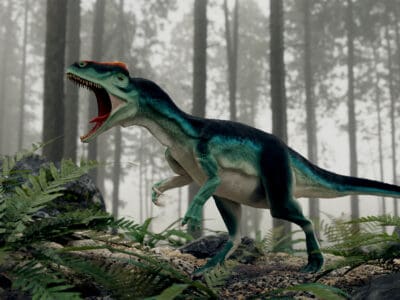
Allosaurus
Allosaurus is the official state fossil of Utah because of the abundant number of fossils found in the state.
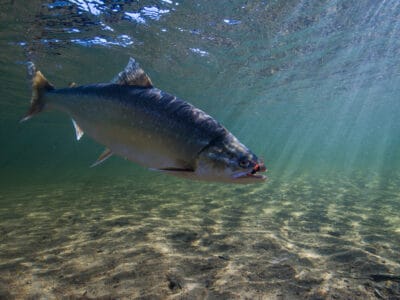
Arctic Char
Arctic char is the northern-most fish; no other fish lives anywhere further north!

Beewolf wasp
They hunt bees
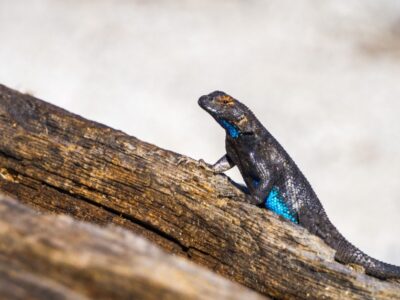
Blue Belly Lizard
This species can detach its tail to escape from predators

Bull Trout
The bull trout is not actually a trout, but a member of the char family.
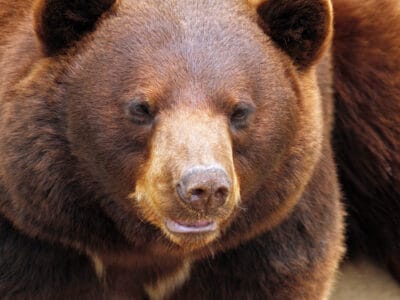
Cinnamon Bear
A newborn cinnamon bear weighs 1/2 pound -- about the same as a large apple.

Common Yellowthroat
The Common Yellowthroat stays close to the ground and uses stealth to survive!
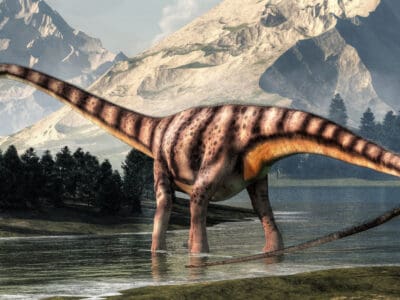
Diplodocus
Their long tales could have been used as a whip!

Flea
Adult fleas can jump up to 7 inches in the air

Jackrabbit
They can run as fast as 45 mph.
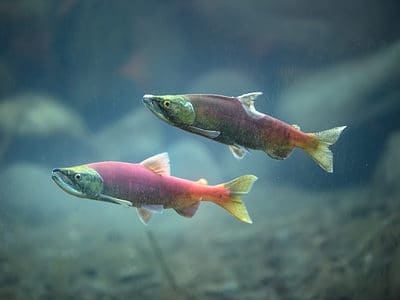
Kokanee Salmon
A non-anadromous type of sockeye salmon

MacGillivray’s Warbler
The complicated story of how MacGillivray’s Warblers got their name involves three ornithologists, a physician and a compromise.

Mealybug
They have a symbiotic relationship with ants.

Mockingbird
Mockingbirds are incredible mimics that can learn hundreds of songs!

Nematode
Nematodes range in size from 1/10 of an inch to 28 feet long

Orb Weaver
Females are about four times the size of males

Owl
The owl can rotate its head some 270 degrees
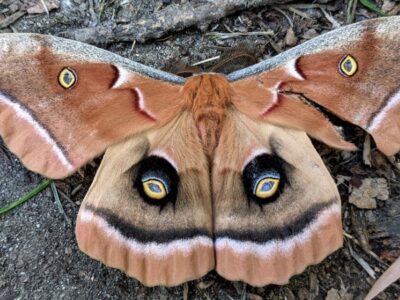
Polyphemus Moth
The Polyphemus moth doesn’t and can't eat, except when it's a caterpillar!
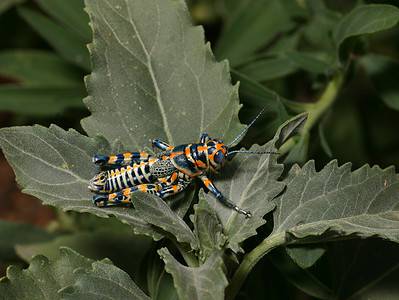
Rainbow Grasshopper (Dactylotum bicolor)
They have strikingly bright colors

Rat Snakes
Rat snakes are constrictors from the Colubridae family of snakes.

Rooster
Will mate with the entire flock!

Smallmouth Bass
A fierce fighter!

Smokybrown Cockroach
Has up to 45 eggs per egg case
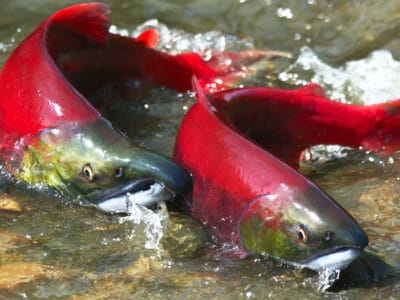
Sockeye Salmon
Called "red salmon" because their skin turns bright red to dirty red during spawning season

Tree Cricket
They make music with their wings
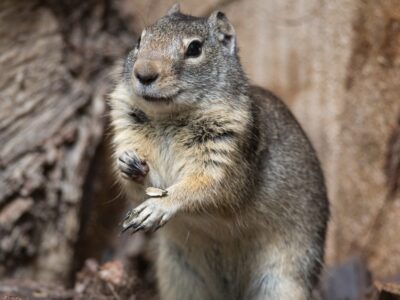
Uinta Ground Squirrel
The squirrel is named after the Uinta Mountains, which are part of the Rocky Mountain range and are found in Utah and Wyoming.
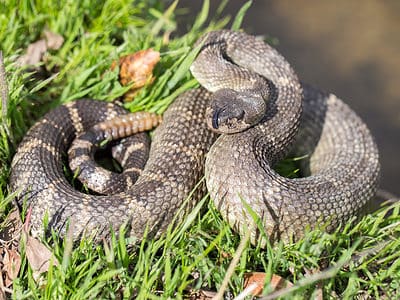
Western Rattlesnake (Northern Pacific Rattlesnake)
Western rattlesnakes are shy and try to avoid people whenever possible.
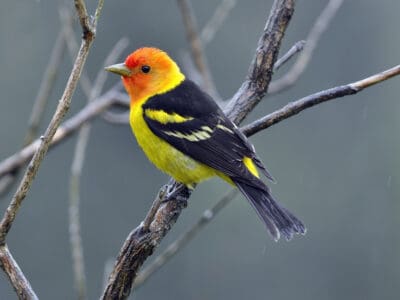
Western Tanager
They migrate farther north than any other tanager.
Idahoan Animals List
- Admiral Butterfly
- Allosaurus
- Arctic Char
- Beewolf wasp
- Blue Belly Lizard
- Bull Trout
- Cinnamon Bear
- Common Yellowthroat
- Diplodocus
- Dire Wolf
- Flea
- Jackrabbit
- Kokanee Salmon
- MacGillivray’s Warbler
- Mealybug
- Milk Snake
- Mockingbird
- Nematode
- Night Snake
- Orb Weaver
- Owl
- Polyphemus Moth
- Rainbow Grasshopper (Dactylotum bicolor)
- Rat Snakes
- Rooster
- Smallmouth Bass
- Smokybrown Cockroach
- Sockeye Salmon
- Swallowtail Butterfly
- Tree Cricket
- Uinta Ground Squirrel
- Western Rattlesnake (Northern Pacific Rattlesnake)
- Western Tanager
- Yellowish Cuckoo Bumblebee (formerly Fernald’s Cuckoo Bumblebee)
Animals in Idaho FAQs (Frequently Asked Questions)
What is the most dangerous animal in Idaho?
Bison are the most dangerous animals in Idaho. The tremendous weight and strength of this strange mammal are two reasons why it’s so dangerous. They are also unpredictable and have been known to charge people who are visiting national parks where they live. They can cause serious injury or even kill a human.
Staying away from these mammals and being respectful of them and their habitat can help a visitor enjoy a safe, pleasant trip to an Idaho park.
What other dangerous animals are in Idaho?
Other dangerous animals living in Idaho include the Great Basin rattlesnake, gopher snake, black widow spider, and grizzly bear.
What animals live in southern Idaho?
Wildcats (specifically bobcats), moose, mule deer, Peregrine falcon, coyotes, ring-necked ducks, and elk along with rodents such as the golden-mantled ground squirrel and common chipmunk are just a few of the animals that can be seen in southern Idaho.
What animals live in the Idaho mountains?
Mountain goats, grizzly bears, gray wolves, bighorn sheep, barred owls, mountain bluebirds and the yellow-bellied marmot are just some of the wildlife living in the mountains in Idaho.
What spiders are in Idaho?
Some notable Idaho spiders include:
- Cat-faced spider
- Western black widow
- Red-backed jumping spider
- Hobo spider
For a complete look at spiders in the state, make sure to read ‘Discover 10 Spiders Found in Idaho.’
What lakes are in Idaho?
Idaho is home to many massive lakes. Some of the best lakes in Idaho include Lake Pend Oreile, Lake Coeur d’Alene, and Lake Cascade.







